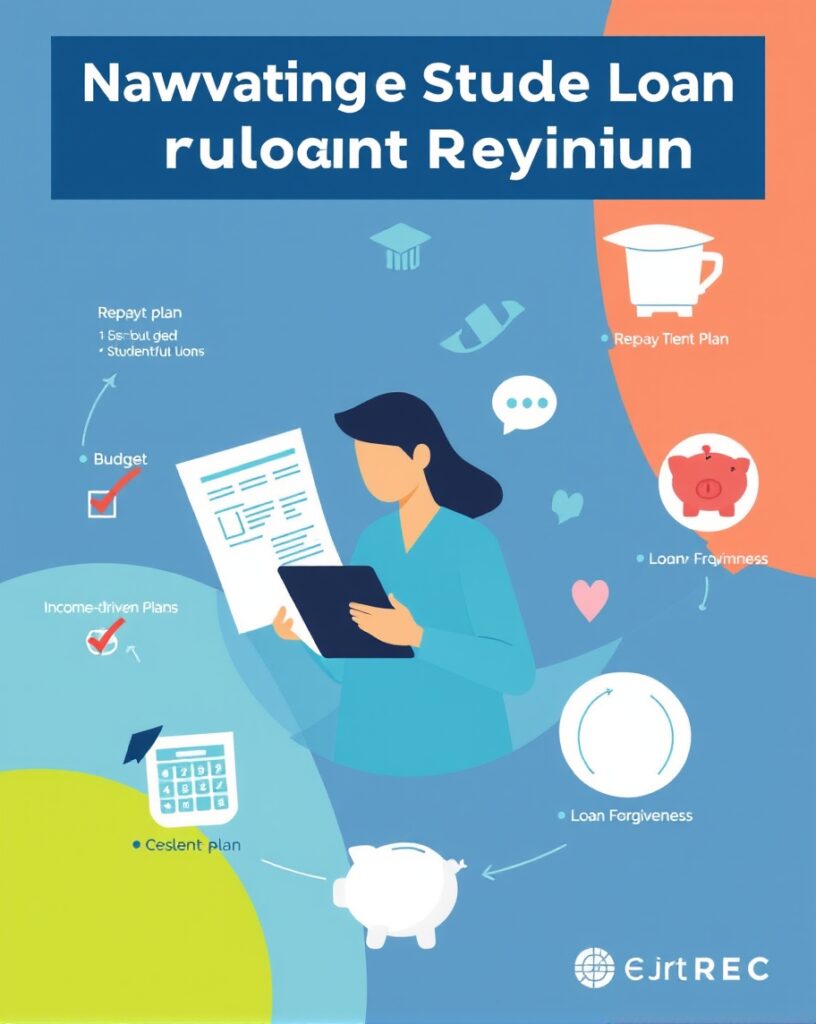Student loans can be a significant financial burden, but with the right strategies, you can manage and repay them effectively. Whether you’re a recent graduate or someone who has been paying off student loans for years, understanding your options and implementing effective repayment strategies can make a big difference. In this blog, we’ll explore essential tips and tricks to help you navigate student loan repayment and achieve financial freedom.
1. Understand Your Loan Types and Terms
Before you dive into repayment strategies, it’s crucial to understand the types of student loans you have and their terms. There are generally two main categories of student loans:
- Federal Student Loans: These loans are funded by the federal government and usually offer lower interest rates and more flexible repayment options. They include Direct Subsidized Loans, Direct Unsubsidized Loans, Direct PLUS Loans, and Direct Consolidation Loans.
- Private Student Loans: These loans are offered by private lenders and can have varying interest rates and repayment terms. They often have fewer borrower protections compared to federal loans.
Key Points to Review:
- Interest Rates: Know whether your loans have fixed or variable interest rates.
- Repayment Terms: Understand the length of your repayment period and monthly payment amounts.
- Grace Periods: Be aware of any grace periods that allow you to postpone payments after graduation.
2. Create a Repayment Plan
Creating a well-structured repayment plan is essential for managing your student loans effectively. Here are some steps to consider:
- Calculate Your Monthly Payments: Use a student loan calculator to estimate your monthly payments based on your loan balance, interest rate, and repayment term.
- Choose a Repayment Plan: Federal student loans offer several repayment plans, including:
- Standard Repayment Plan: Fixed monthly payments over 10 years.
- Graduated Repayment Plan: Lower payments that increase every two years.
- Income-Driven Repayment Plans: Payments based on your income and family size (e.g., REPAYE, PAYE, IBR, ICR).
- Set Up Automatic Payments: Enroll in autopay to ensure you never miss a payment and potentially qualify for a lower interest rate.
3. Explore Repayment Assistance Programs
There are various programs available to help manage student loan repayment:
- Public Service Loan Forgiveness (PSLF): For those working in qualifying public service jobs, PSLF can forgive the remaining balance on Direct Loans after 120 qualifying payments.
- Teacher Loan Forgiveness: Provides forgiveness for teachers who work in low-income schools for five consecutive years.
- Income-Driven Repayment (IDR) Forgiveness: Forgives remaining loan balance after 20 or 25 years of qualifying payments under an IDR plan.
- Refinancing: Consider refinancing your private loans to potentially lower your interest rate. Be cautious, as refinancing federal loans will forfeit federal protections and benefits.
4. Budget and Manage Your Finances
Effective budgeting is crucial for managing student loan repayments and ensuring you stay on track:
- Create a Budget: Track your income and expenses to allocate funds for student loan payments and other financial responsibilities.
- Build an Emergency Fund: Save for unexpected expenses to avoid missing loan payments due to financial emergencies.
- Prioritize High-Interest Loans: If you have multiple loans, focus on paying off those with the highest interest rates first to minimize overall interest costs.
5. Explore Income-Driven Repayment Plans
If you’re struggling with high monthly payments, income-driven repayment plans can provide relief by adjusting your payments based on your income:
- REPAYE (Revised Pay As You Earn): Caps payments at 10% of your discretionary income, with forgiveness after 20 years for undergraduate loans and 25 years for graduate loans.
- PAYE (Pay As You Earn): Similar to REPAYE, but with slightly different eligibility requirements and forgiveness terms.
- IBR (Income-Based Repayment): Caps payments at 10-15% of discretionary income, with forgiveness after 20 or 25 years.
- ICR (Income-Contingent Repayment): Payments are based on your income and family size, with forgiveness after 25 years.
6. Stay Informed and Communicate with Your Loan Servicer
Maintaining open communication with your loan servicer can help you stay informed and address any issues:
- Regularly Check Your Loan Servicer’s Website: Review your loan balance, payment history, and account status.
- Ask Questions: If you’re unsure about your options or need assistance, contact your loan servicer for clarification and support.
- Update Your Contact Information: Ensure your loan servicer has your current address and contact details to avoid missing important communications.
7. Plan for the Future
As you work on repaying your student loans, also plan for your financial future:
- Build Credit: Timely student loan payments can positively impact your credit score. Monitor your credit report to ensure accuracy.
- Save for Retirement: Even while repaying student loans, prioritize contributions to retirement accounts like a 401(k) or IRA.
- Consider Long-Term Financial Goals: Balance student loan repayment with other financial goals, such as buying a home or starting a family.

